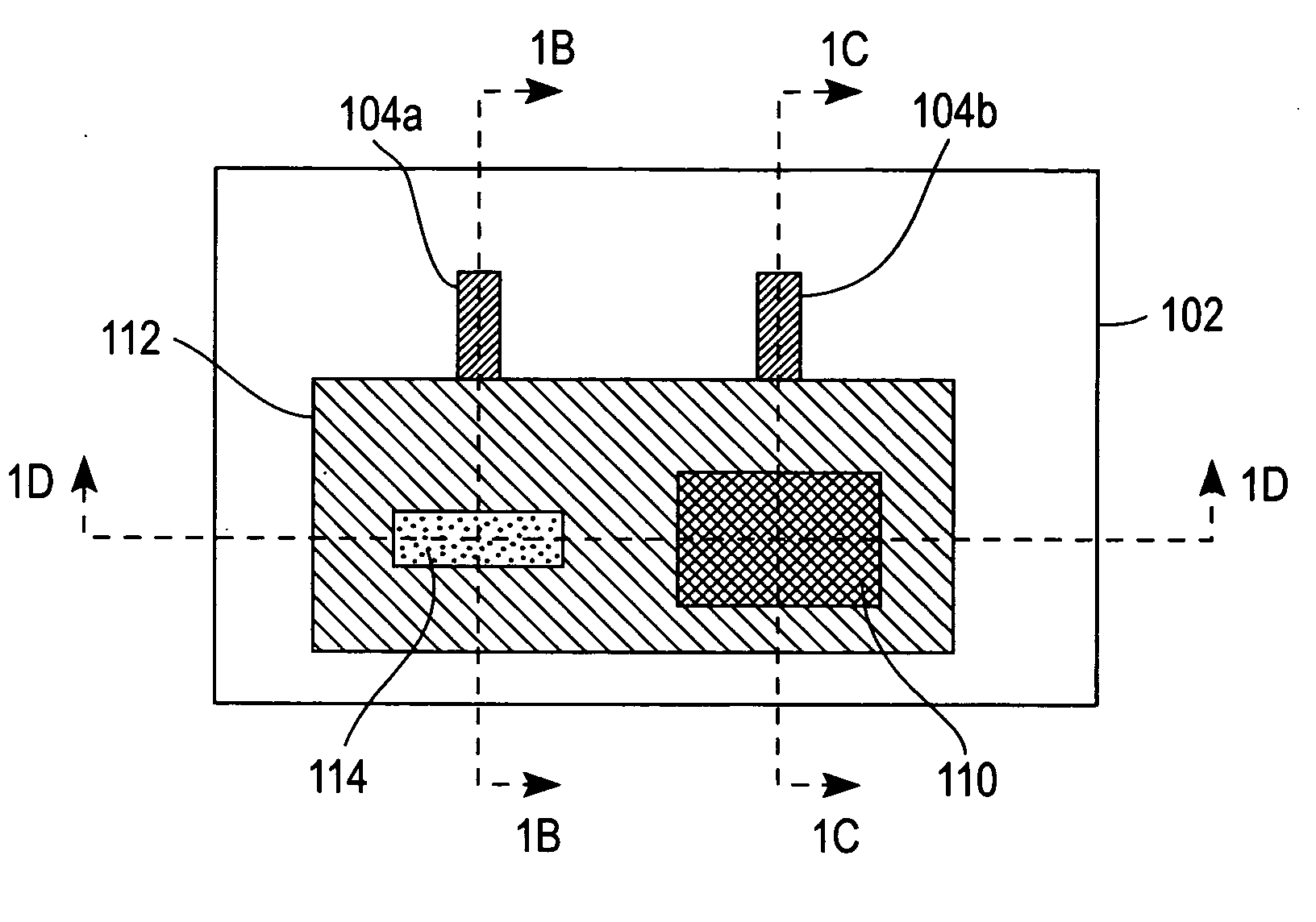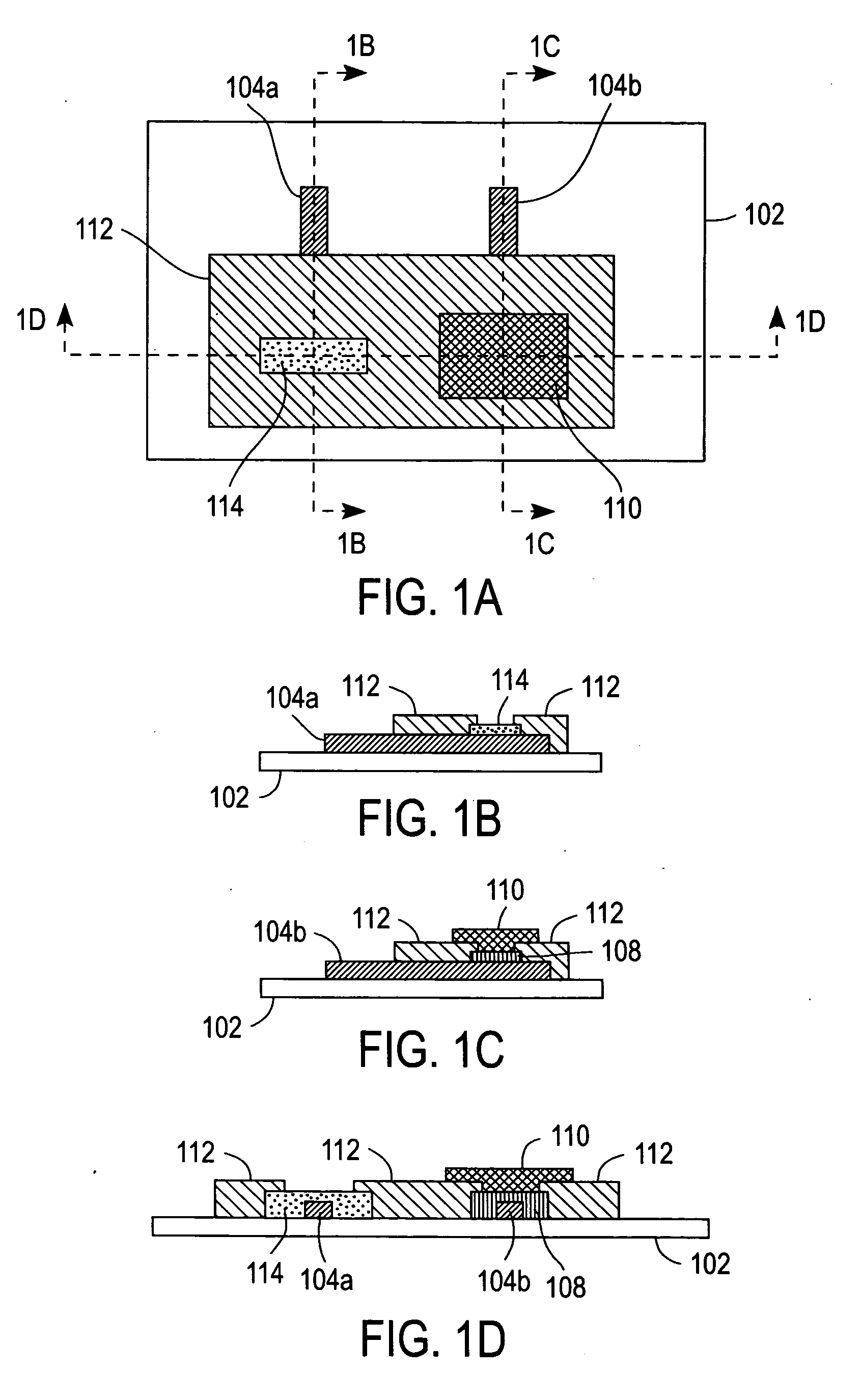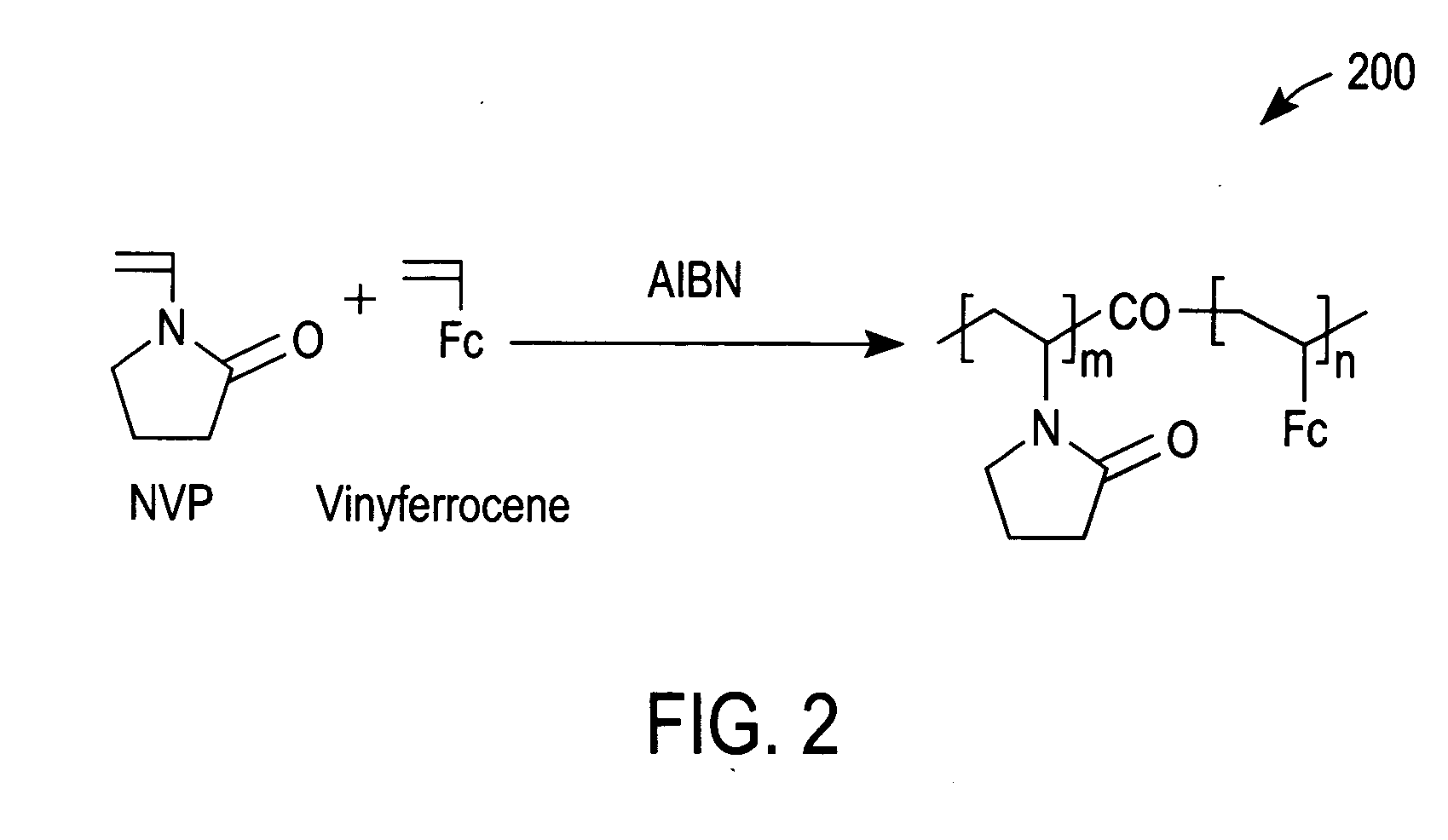Electrochemical-based sensor with a redox polymer and redox enzyme entrapped by a dialysis membrane
a dialysis membrane and redox polymer technology, applied in the field of sensors, can solve the problems of undesirable leaching of redox mediators into human or other subjects' bodies, reduced reaction kinetics in aqueous media, low flexibility, etc., and achieve the effect of preventing leaching and rapid reaction kinetics
- Summary
- Abstract
- Description
- Claims
- Application Information
AI Technical Summary
Benefits of technology
Problems solved by technology
Method used
Image
Examples
example 1
[0049] Cyclic voltammetry (CV) with a 5% solution (in phosphate buffer saline (PBS)) of redox polymer 200 of FIG. 2 was performed with a glassy carbon electrode (GCE) at 50 mV / s between −0.1 and 0.5 V vs Ag / AgCl. Curve 500 of FIG. 5 was thereby obtained and demonstrates that redox polymer 200 is redox active at the glassy carbon electrode.
[0050] Next, glucose oxidase (a redox enzyme) was added to the PBS to a concentration of 0.05 wt %. The redox peaks of a subsequent CV scan decreased slightly, as shown by a curve 510 of FIG. 5. The small decrease in the oxidation and reduction peaks of curve 510 in comparison to curve 500 can be attributed to a small dilution resulting from the addition of glucose oxidase and / or an adsorption of glucose oxidase that resulted in the passivation of a small portion of the GCE.
[0051] Subsequently, glucose was added to the PBS to a concentration of 100 mM. This addition caused the oxidation current to increase, as demonstrated by CV curve 520 of FIG....
example 2
[0052] A GCE was dipped into a solution containing a 5% solution of redox polymer 200 of FIG. 2 dissolved in 2-isopropanol. The GCE was then removed from the 5% solution and allowed to dry. The GCE was subsequently immersed in PBS and tested using CV at 20 mV / s between −0.1 and 0.5 V vs. Ag / AgCl. The magnitude of the redox peaks decreased rapidly upon successive CV scans, as shown in FIG. 6. This indicates that redox polymer 200 washed off the GCE in the absence of a dialysis membrane to entrap redox polymer 200 in the vicinity of the GCE.
example 3
[0053] A coated electrode was prepared by applying 0.5 μL of a 5% (w / v) solution of redox polymer 200 dissolved in 2-isopropanol onto a carbon electrode (2.25 mm×2.25 mm) followed by drying in an oven at 50° C. for about 5 minutes. A dialysis membrane was then formed on the coated electrode by preparing a solution containing 2% (w / v) cellulose acetate (CA) and 0.7% PEG in acetone.
[0054] Next, 0.8 μL of the CA / PEG mixture was applied to the coated electrode and dried in the oven at 50° C. for 30 minutes. The CA / PEG mixture formed a cast dialysis membrane that retained large molecular weight redox polymer 200 in the vicinity of the carbon electrode. The GCE prepared as described immediately above was immersed in PBS and tested by CV at 20 mV / s between −0.1 and 0.5 V vs. Ag / AgCl. The magnitude of the redox peaks initially increased upon successive CV scans due of an initial wetting of the electrode and then gradually decreased, as shown in FIG. 7. It should be noted that the observed ...
PUM
| Property | Measurement | Unit |
|---|---|---|
| molecular weight | aaaaa | aaaaa |
| molecular weight | aaaaa | aaaaa |
| glucose catalytic current | aaaaa | aaaaa |
Abstract
Description
Claims
Application Information
 Login to View More
Login to View More - R&D
- Intellectual Property
- Life Sciences
- Materials
- Tech Scout
- Unparalleled Data Quality
- Higher Quality Content
- 60% Fewer Hallucinations
Browse by: Latest US Patents, China's latest patents, Technical Efficacy Thesaurus, Application Domain, Technology Topic, Popular Technical Reports.
© 2025 PatSnap. All rights reserved.Legal|Privacy policy|Modern Slavery Act Transparency Statement|Sitemap|About US| Contact US: help@patsnap.com



